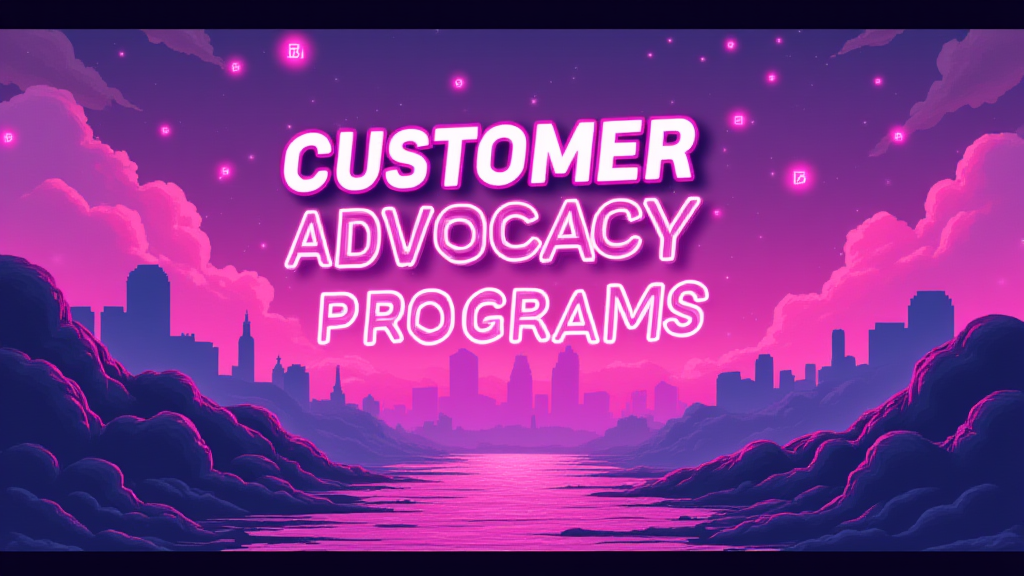Customer Advocacy Programs: Driving Brand Loyalty

Published on: October 01, 2024
Customer Advocacy Programs are strategic initiatives designed to cultivate and empower satisfied customers to become vocal supporters and promoters of a brand, product, or service. These programs leverage the power of word-of-mouth marketing by encouraging customers to share their positive experiences with others, ultimately driving brand loyalty and attracting new customers. Learn more about customer advocacy strategy.
Why Customer Advocacy Programs Matter 🚀
In today's competitive business landscape, Customer Advocacy Programs play a crucial role in:
- Building trust and credibility
- Increasing customer retention
- Generating qualified leads
- Reducing marketing costs
- Enhancing brand reputation
Key Components of Successful Customer Advocacy Programs
To create effective Customer Advocacy Programs, consider incorporating these essential elements:
1. Identify and Nurture Advocates 🔍
Identify your most satisfied customers and develop strategies to nurture their enthusiasm for your brand. This may include:
- Personalized communication
- Exclusive perks or rewards
- Early access to new products or features
2. Provide Valuable Content and Resources 📚
Equip your advocates with the tools they need to effectively promote your brand:
- Educational materials
- Shareable social media content
- Case studies and success stories
3. Create Opportunities for Engagement 🤝
Develop platforms and events that encourage interaction between advocates and potential customers:
- Online communities or forums
- Customer advisory boards
- Webinars or virtual events
4. Measure and Optimize Program Performance 📊
Regularly assess the effectiveness of your Customer Advocacy Program using key metrics such as:
- Net Promoter Score (NPS)
- Referral rates
- Social media mentions and engagement
- Customer retention rates
Best Practices for Customer Advocacy Programs
To maximize the impact of your Customer Advocacy Program, consider implementing these best practices:
| Practice | Description |
|---|---|
| Personalization | Tailor advocacy opportunities to individual customer preferences and strengths |
| Recognition | Acknowledge and reward advocates for their contributions |
| Transparency | Clearly communicate program goals, expectations, and benefits |
| Continuous Improvement | Regularly solicit feedback from advocates to refine and enhance the program |
Overcoming Common Challenges in Customer Advocacy Programs
While Customer Advocacy Programs offer numerous benefits, they may also face certain challenges:
- Scalability: Maintaining personalized relationships as the program grows
- Consistency: Ensuring advocates maintain enthusiasm over time
- Measurement: Accurately attributing business outcomes to advocacy efforts
- Legal Considerations: Navigating disclosure requirements and compliance issues
By addressing these challenges proactively, organizations can build robust and effective Customer Advocacy Programs that drive long-term success.
Implementing Customer Advocacy Programs in Your Organization
As you consider implementing or improving your Customer Advocacy Program, ask yourself these questions:
- Who are our most satisfied and influential customers?
- What unique value can we offer to incentivize customer advocacy?
- How can we integrate advocacy initiatives into our existing marketing and sales processes?
- What metrics will best measure the success of our Customer Advocacy Program?
- How can we leverage technology to scale and streamline our advocacy efforts?
By thoughtfully addressing these questions, you can develop a Customer Advocacy Program that not only delights your customers but also drives significant business growth and brand loyalty. Explore how to measure customer advocacy rate.

















